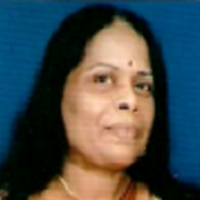Measures for minimizing human trafficking!
By M.Y.Siddiqui
Globalisation of Indian economy since 1991 has increased the movement of people in search of better opportunities, which often make them victims of trafficking leading to their exploitations by unscrupulous elements. Exploitations like forced labour, prostitution, forced marriages, domestic servitude, begging, organ trade, drug couriers, arms smuggling and so on are order of the day. Victims of trafficking often endure extreme hardships, such as, physical violence, sexual abuse, harassment, threat and coercion as their common experiences. Some victims lose their lives at the hands of ruthless traffickers who exploit their vulnerabilities. Human trafficking issues have national and international ramifications. Complex nature of human trafficking, therefore, calls for a multidimensional strategy in tackling it at domestic, regional and international level. Strengthening cooperation and establishing inter-state channels of communication between the states and neighbouring countries can be an effective tool in countering trafficking, hoping that States/Union Territories (UTs) will be better equipped to tackle the menace of growing trafficking effectively.
However, there are impediments that include lack of public awareness, lack of training of concerned officials, failure to register cases under relevant laws, ineffective investigations, complicity of officials in human trafficking etc. In this backdrop, union Ministry of Home Affairs (MHA) has stepped in to salvage the situation. Accordingly, regular exchange of information through designated focal points, sensitization of judicial officers, police, border guarding officials, partnership with civil society organisations, organizing capacity building programmes of concerned officials, monitoring activities of private placement agencies, travel agents and disseminating information to vulnerable sections of society have been taken up with all stakeholders to address the problems of human trafficking considerably. To meet the objective, sensitizing the judicial officers of States/UTs on wide ranging issues of trafficking in people, the MHA has been engaging with their judicial academies and Registrar Generals of High Courts for holding periodic judicial colloquiums on anti-human trafficking in keeping with the Guidelines of MHA on such judicial colloquiums to help assist magistrates/judges in taking appropriate decisions to tackle human trafficking cases as by law provided to help the victims of trafficking by providing stringent punishments to traffickers to bring a positive change in society as also improve decision making of judiciary at the grassroots level in conformity with the intent of laws.
Some other measures include provision of a nuanced understanding of human trafficking and related legal regime of commercial, sexual exploitation, forced labour, organ trade, forced marriage and other types of trafficking, legal counseling, awareness of relevant laws, international conventions like UNCTOC and SAARC, role of NGOs/civil society in curbing human trafficking. General guidelines on holding judicial colloquium include judges of High Courts, Sessions Courts, Public Prosecutors, and District nodal police officers for human trafficking of the concerned State/UT under the aegis of concerned State/UT should also include prominent civil society organizations to make the colloquiums more broad based, productive and result oriented. Judicial Academy is also required to coordinate with State Home Secretary, State Nodal Officers of Anti-Human Trafficking Units as well as invite other stakeholders for effective workable preventive actions. State officials charged with Anti-Human Trafficking Unit will be responsible for preventive actions. Special responsibility will devolve on police and other law enforcement agencies of the concerned State/UT.
The US State Department in its 2022 Trafficking in Persons report has stated that India does not fully meet the minimum standards for the elimination of trafficking. It also stated 22 of India’s 36 States/UTs did not report identifying any bonded labour victims or filing any cases under the relevant rules even as the acquittal rate for traffickers remained at 89 percent. It also reported the government did not report investigating, prosecuting or convicting government officials involved in trafficking crimes. The report released early 2023 has expressed dismay over the lack of update on its national action plan to combat trafficking, or amend Section 370 of Indian Penal Code to remove the requirement of force, fraud or coercion to prove child sex trafficking. The report blamed on the lack of sufficient political wills in States to address bonded labour stymied efforts nationwide. In 2020, government identified 5,156 victims including 2,837 in bonded labour and 1,466 in sex trafficking. But the government did not report the type of trafficking for 694 potential victims in 2020.
US Department of State report quoting union Ministry of Labour and Employment’s annual report stated that despite about 8 million Indians estimated to be in bonded labour the government had identified and rescued only 3,13,1962 people since 1976. Karnataka, Tamil Nadu and Uttar Pradesh accounted for the majority of bonded labour victims identified in 2020, with 1,291 from Karnataka, 289 from Tamil Nadu and 1,026 from Uttar Pradesh. In 2019, 5,145 trafficking victims and 2,505 potential victims were identified. Traffickers kidnap
children from public places including railway stations, entice girls with drugs and force girls as young as five years to take hormone injections to appear older for sex trafficking. Traffickers also kidnap and force Indians and Nepali women and girls to work as ‘orchestra dancers’ in India, especially in Bihar where girls perform with dance groups until they have rapid fabricated debts. Bihar, Chhattisgarh, Jharkhand, Odisha and Uttar Pradesh are major source states for economically vulnerable workers potentially exposed to labour trafficking, the report stated.
According to the UN International Labour Organisation (ILO)’s latest data, the Asia and Pacific region has the highest number of victims of forced labour and forced marriage, accounting for more than half of the global total 29.6 million as on January 30, 2023. Red flag areas of trafficking are those living with employer, poor living conditions, multiple people in cramped and camped space and those unable to speak to individual alone. People at the highest risk of trafficking are unhoused youths, refugees or migrant workers, people with substance abuse disorders, survivors of other forms of past violence, members of minority population, and people with disabilities. Sex trafficking is the most prevalent form of human trafficking. Child trafficking is the main cause of human trafficking in India. Its size is two million in a year. Every eight minutes one child is trafficked.
Overall, anti-trafficking efforts in India, especially against bonded labour, remain inadequate. Government achieved fewer convictions and the acquittal rate for traffickers remained high at 73 percent. Official complicity in trafficking remains a major concern; the government did not report any prosecution or conviction against officials for their covert support to trafficking. This being the scenario so far, unless the union government is determined to curb the menace of human trafficking with all out multi-pronged efforts, trafficking is not likely to curb any time in foreseeable future!
Powered by Froala Editor



LEAVE A REPLY